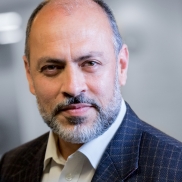Black and racialized populations — including in Ottawa — face daily degradation in almost all walks of life.
Abid Jan – Ottawa Citizen
The scale and complexity of systemic racism have confused many for decades. However, it seems some of us know exactly who the culprit is in our city: the Ottawa Police Service.
The tragic deaths of Ottawa resident Abdirahman Abdi in 2016, and of George Floyd in Minneapolis last year, ignited the spark. We started hearing calls to defund the police. We witnessed some of the most heated Ottawa Police Services board meetings to date. Recently, someone released video of police officers conversing with racist language. In our collective concern over racism, the focus is clearly on police.
The Portraits of Ottawa’s Black Community, developed by Ottawa Neighbourhood Equity Index (NEI), shows the roots of inequity lie in the systemic racism embedded in several institutions linked directly to our colonial past. But only the police department stands out — because bias-motivated acts from police officers are physical and visible.
The words and deeds of some police officers reflect a more general embedded mindset in our society. Officers are not trained to be racist; some bring implicit bias with them. Police brutality is not the cause but a symptom of systemic racism. Other symptoms include the widening disparity between socio-economic classes and the health and living conditions of many Black and racialized populations.
We know that defunding the police would not alter that fact that 17 per cent of the Black and 10 per cent of racialized communities (compared to five per cent of the general population) live in the 10 least equitable neighbourhoods in Ottawa. Reforming the police alone would not increase the average income in those neighbourhoods from just half of the city’s average; or decrease the unemployment rates that are as high as 12 per cent in those neighbourhoods, compared to two per cent elsewhere in the city.
Police reform is needed, but it’s not responsible for the fact that 28 per cent of Black and 23 per cent of the racialized population (compared to 12 per cent of the general population) live below low-income measures.Black and racialized populations face daily degradation in almost all walks of life. However, unlike George Floyd, their pain is hidden, because they are victims of less visible forms of systemic discrimination.
This hidden racism is even worse because there are no colonial masters to blame, no written regulations to challenge, no slaves to free, and no residential and segregated schools to shut down. There’s no single entity responsible. There is nothing concrete such as Jim Crow laws or redlining to challenge. Yet, racialized populations are helplessly suffering multiple forms of hidden discrimination concealed in the fabric of society and other institutions.
No institution officially supports discrimination. But it’s real. It begins with our implicit bias. We can’t hurt the people we hate until an institution employs us; grants us powers over people; offers us the flexibility to interpret some regulations as we wish; then provides us institutional protection from accountability when we victimize the people we hate. Examples: continuing inequity and discrimination in education, housing, employment, wealth, the justice system, representation in leadership positions and immigration. Public institutions can’t read minds to avoid hiring people with serious implicit bias. And inclusivity training isn’t much more than a Band-Aid solution.We need education and awareness campaigns, of course, to promote a counter, preventative narrative among social service agencies, media and academia. But public institutions can also help employees avoid discrimination through:
— Conducting system audits and reviewing policies and procedures based on victims’ lived experiences to ensure people aren’t trapped in officialese but are treated like humans. For example, families are torn apart when applications for spousal immigration of some racialized immigrants are delayed indefinitely without even a response from immigration authorities.–Eliminating employees’ fear of personal responsibility and giving them room for considering critical factors that will help people, for instance giving a bank employee more discretion to OK a loan. The fear of personal responsibility, coupled with implicit bias, lead some officials to commit invisible acts of cruelty because the system design supports that dehumanization.
–Monitoring for potential abuse of power by comparing records and assessments to look for disproportionate responses and selective application of ostensibly neutral criteria (For instance, credit history irregularities may be overlooked with white mortgage applicants but used to disqualify racialized communities).Based on the data and evidence of exponential disparity before us, let’s admit that what’s happening around us is not normal. We need to address it.
Suppose we continue to blame only the police for the pervasive systemic discrimination of our age. In that case, future generations won’t find any of us different from those before us who thought slavery, lynching, and segregation were normal.
Abid Jan is a community development professional, currently working to address hate and violence in Ottawa.


Comments
drover sointeru
My coder is trying to persuade me to move to .net from PHP. I have always disliked the idea because of the expenses. But he’s tryiong none the less. I’ve been using WordPress on numerous websites for about a year and am concerned about switching to another platform. I have heard good things about blogengine.net. Is there a way I can import all my wordpress content into it? Any help would be really appreciated!